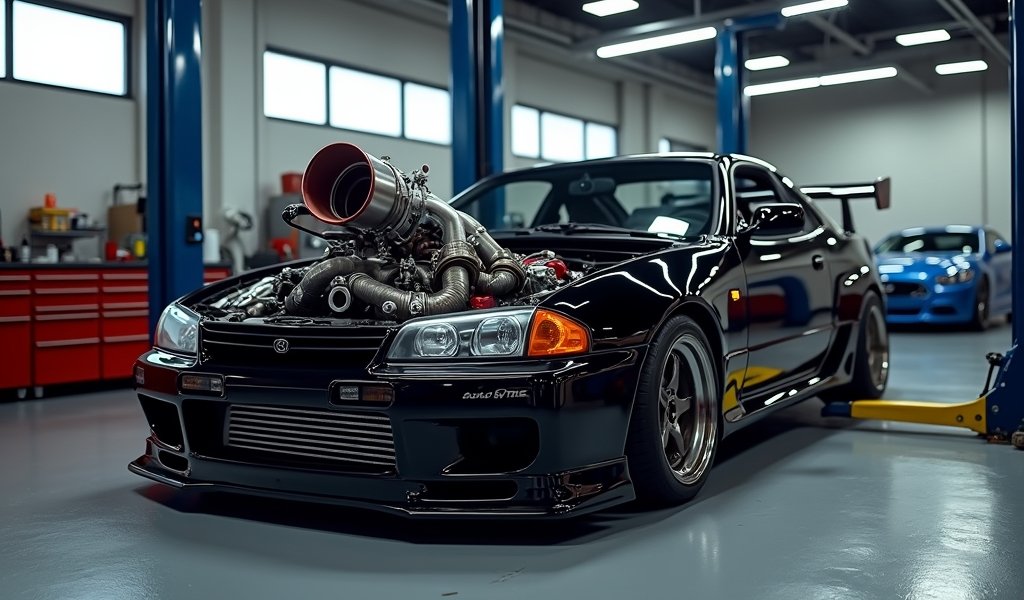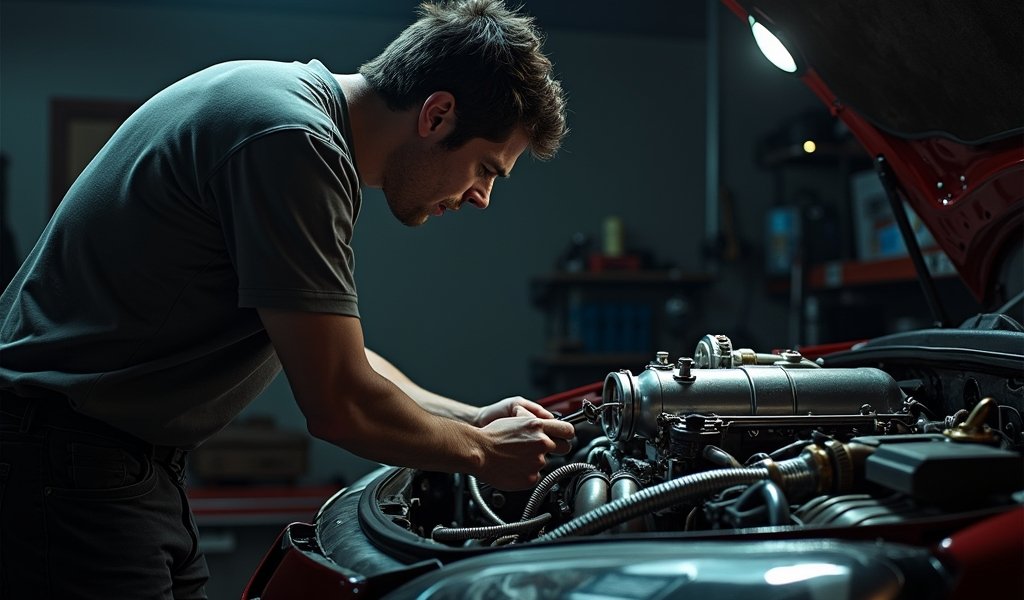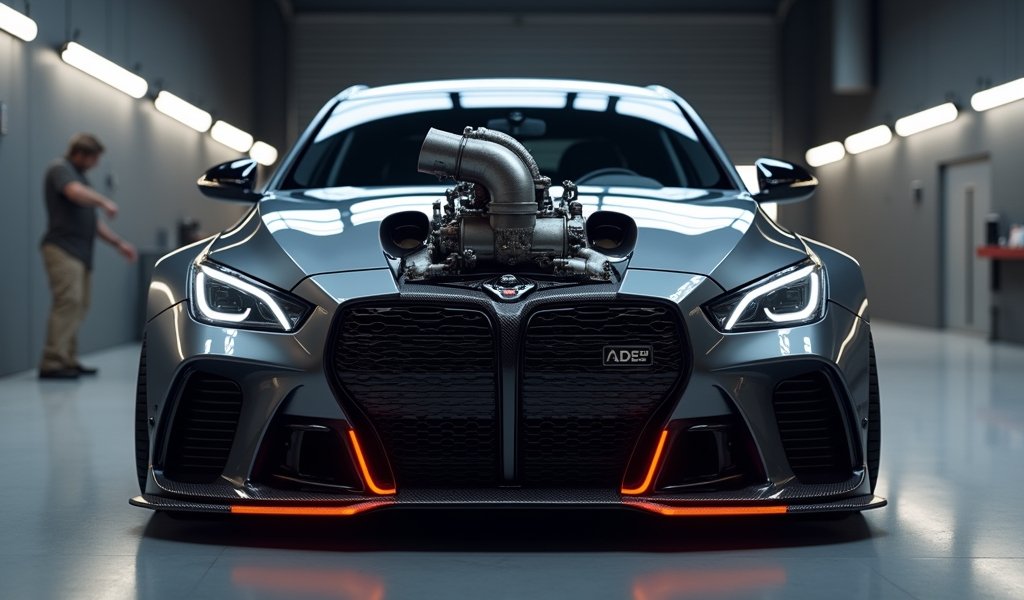Overview
This article provides a detailed guide on selecting, installing, and maintaining aftermarket turbo kits for vehicles, covering everything from compatibility checks and proper sizing to installation considerations, tuning requirements, and reliability enhancements. The author emphasizes that successful turbocharging requires careful planning, proper component selection, expert tuning, and ongoing maintenance to achieve performance gains without sacrificing engine longevity.
Table of Contents
- Understanding Aftermarket Turbo Kits: What You’re Really Buying
- Compatibility Check: Is Your Car Ready for Boost?
- Choosing the Right Turbo Size: Finding Your Sweet Spot
- Installation Tips: DIY or Professional Route?
- Tuning Essentials: The Make-or-Break Factor
- Reliability Matters: Building a Boosted Engine That Lasts
- Legal and Practical Considerations Before You Boost
- Conclusion
- Frequently Asked Questions
Understanding Aftermarket Turbo Kits: What You’re Really Buying
That distinctive whistle of a turbocharger spooling up isn’t just a sound – it’s a promise of power that’s drawn countless enthusiasts into the world of aftermarket turbo kits for cars. After 20 years of building and tuning performance engines, I can tell you there’s nothing quite like the rush of boost.
So what exactly are you getting when you purchase a turbo kit? A comprehensive package typically includes the turbocharger itself, exhaust manifolds to channel those hot gases, intercooler systems to cool the compressed air, oil lines for proper lubrication, and the necessary piping and hardware for installation. Better kits also include gaskets, blow-off valves, and sometimes the engine management components you’ll need.
Turbochargers come in several flavors, each with distinct performance characteristics:
- Single turbo: The classic setup that handles all exhaust flow
- Twin turbo: Two identical turbos each processing half the exhaust
- Sequential setup: Different-sized turbos activating at various RPM ranges
- Twin-scroll: A single turbo with divided housing for better exhaust pulse separation
- Variable geometry (VGT): Uses movable vanes to optimize boost across the powerband
Price ranges vary dramatically. Entry-level universal kits start around $2,000, while high-quality vehicle-specific systems can exceed $8,000. What drives these differences? Component quality, kit completeness, brand reputation, and whether it’s designed specifically for your vehicle or offers a more generic fit.
When shopping for aftermarket performance upgrades, remember that turbo kits represent one of the most significant modifications you can make. This isn’t like bolting on a new intake – we’re fundamentally changing how your engine breathes and performs.
Compatibility Check: Is Your Car Ready for Boost?
Before you start fantasizing about boost gauges and turbo noises, let’s have an honest conversation about your car’s suitability for forced induction. The truth is, not every vehicle makes a good candidate for turbocharging.
Naturally aspirated engines (those without factory forced induction) typically need more extensive modifications than engines already designed with turbocharging in mind. Your engine’s compression ratio is especially critical – higher compression engines may require internal work to safely handle boost pressure without destructive detonation.

Choosing the Right Turbo Size: Finding Your Sweet Spot
When it comes to turbochargers, bigger isn’t always better. In fact, selecting the right size turbo might be the single most important decision in your build. I’ve seen too many enthusiasts chase maximum boost numbers only to end up with an undrivable car.
Turbo sizing revolves around the compressor map – essentially a performance chart showing where a specific turbocharger operates most efficiently. Choose too large, and you’ll experience significant lag – that frustrating moment where you press the gas and… nothing happens… until suddenly all the power arrives at once. Choose too small, and you’ll hit the turbo’s flow capacity too early, limiting top-end power and potentially creating reliability issues from excessive backpressure.
For street-driven cars, I typically recommend targeting full boost by around 3,000-3,500 RPM. This gives you usable power throughout most of your driving range without excessive lag. For weekend warriors who want to hit the track occasionally, I might push that a bit higher to 3,500-4,000 RPM to gain more top-end power.
Most reputable turbo manufacturers provide sizing recommendations based on engine displacement and power goals. As a starting point, consider these general guidelines:
- 4-cylinder engines (2.0L and under): T3/T4 hybrid or GT28 series for mild builds
- 6-cylinder engines (2.5-4.0L): GT30 to GT35 series for balanced performance
- V8 engines (4.5L+): GT40 series or larger for adequate flow capacity
Remember that proper turbo sizing should account for your specific driving style and goals. A daily driver needs different characteristics than a dedicated track car.
Installation Tips: DIY or Professional Route?
The eternal question: Should you install that shiny new turbo kit yourself or hand the keys to a professional? This depends on your mechanical skill, available tools, and the complexity of your specific kit.
DIY installation can save $1,500-$3,000 in labor costs, but it requires technical knowledge, specialized tools, and typically takes 20-40 hours for first-timers. Even as someone who’s installed dozens of turbo systems, I still allocate a full weekend for most installs. Professional installation ensures proper fitment and often includes some warranty on the work, but adds significantly to your project budget.
If you’re tackling installation yourself, watch out for these common pitfalls:
- Improper oil line routing (leading to oil starvation or coking)
- Exhaust leaks from poorly sealed connections
- Inadequate clearances between components and body/engine parts
- Wastegate adjustment issues causing boost control problems
- Electrical wiring errors affecting sensors and controllers
You’ll need adequate workspace—ideally a garage with a lift or at minimum good jack stands, proper lighting, and enough room to maneuver around the vehicle. Document everything before disassembly and keep hardware organized in labeled containers. Trust me, your future self will thank you when you’re not hunting for that one critical bolt at 2 AM.
If considering a cold air intake upgrade alongside your turbo installation, ensure its design complements your turbo kit. Intake design becomes even more critical in forced induction applications.
Tuning Essentials: The Make-or-Break Factor
I can’t stress this enough: Even the most meticulously installed turbo kit will perform poorly—or worse, cause catastrophic engine damage—without proper tuning. Engine tuning adjusts fuel delivery, ignition timing, and other parameters to safely accommodate the increased airflow from your turbocharger.
You have several tuning approaches to consider:
- Piggyback systems: These intercept and modify signals between your factory ECU and engine components. They’re relatively affordable but have limitations in tuning precision.
- ECU reflashes: This involves reprogramming your factory computer with new parameters. This offers excellent integration with factory systems at a moderate cost.
- Standalone ECUs: A complete replacement of your factory engine management. These provide maximum flexibility but at higher cost and complexity.
For most street builds, a quality ECU reflash from a reputable tuner provides the best balance of cost and functionality. Find someone who specializes in your specific vehicle platform—experience matters tremendously in tuning forced induction setups.
Warning signs of poor tuning include excessive exhaust temperatures, detonation (that dreaded pinging/knocking sound), poor throttle response, stalling, and excessive fuel consumption. If you experience any of these symptoms, stop driving immediately and consult a tuning professional. Your engine’s life depends on it.
The cost of proper professional car tuning should be factored into your budget from the start—it’s not an area to cut corners.

Reliability Matters: Building a Boosted Engine That Lasts
Adding boost puts additional stress on nearly every system in your vehicle. After seeing countless blown engines roll into my shop, I can tell you that planning for reliability from the start saves heartache and money later.
For serious power gains, consider these reliability enhancements:
- Upgraded engine internals for high-boost applications (forged pistons, stronger connecting rods)
- Oil cooling systems to maintain proper lubrication temperature
- Enhanced fuel delivery through larger injectors and higher-capacity pumps
- Upgraded clutch and transmission components to handle increased torque
- Catch cans to minimize oil contamination in the intake tract
Your maintenance schedule will need adjustment too. Plan for more frequent oil changes (every 3,000-5,000 miles depending on how hard you drive), regular spark plug inspections, and closer monitoring of fluid conditions. Use high-quality synthetic oil that can withstand the increased heat and stress of forced induction.
Driving habits significantly impact turbo longevity. Allow proper warm-up time before applying boost, avoid lugging the engine at low RPM under boost, and perhaps most importantly, let your car idle for 30-60 seconds before shutdown after hard driving to prevent oil coking in the turbocharger bearings.
According to industry experts, proper maintenance and driving habits can double the lifespan of a turbocharged engine.
Legal and Practical Considerations Before You Boost
Before diving into your turbo project, take a moment to consider the legal and practical implications. Many states have regulations governing engine modifications, particularly those affecting emissions. California residents face the strictest rules under CARB regulations, where non-compliant modifications can result in failed inspections, fines, or even being required to reverse your hard work.
Insurance is another often-overlooked aspect. Some policies may be invalidated by undisclosed performance modifications, while others might increase premiums or require additional coverage. Have an honest conversation with your insurance agent before making significant modifications.
Finally, consider the impact on resale value. While enthusiast buyers might pay a premium for a well-executed turbo build, the general market typically devalues modified vehicles due to reliability concerns. Document all work thoroughly and keep stock components if possible to maximize future options.
Conclusion
Adding an aftermarket turbo kit to your vehicle can transform your driving experience, delivering exhilarating performance that factory engineers often leave on the table. However, success lies in the details—proper component selection, meticulous installation, expert tuning, and ongoing maintenance are all essential ingredients in the recipe for turbocharged satisfaction.
Before taking the plunge, honestly assess your goals, budget, and technical capabilities. A well-executed turbo build is a symphony of engineering, while a rushed or poorly planned one can become an expensive nightmare of reliability issues and disappointment.
Start conservatively with your boost goals and build upon success rather than reaching for maximum power immediately. Remember that building a reliable turbocharged engine is a marathon, not a sprint. Take your time, do the research, and enjoy the journey as much as the destination.
The sweet sound of boost and the push back into your seat when the turbo spools up make it all worthwhile. Just make sure you’re building a car you can enjoy for years to come, not just for a few glorious runs before something breaks.
Frequently Asked Questions
How much horsepower can I gain from an aftermarket turbo kit?
Most properly installed and tuned turbo kits can provide 30-70% power increases over stock. The exact gains depend on your base engine, turbo size, and how conservatively you tune for reliability.
Will a turbo kit hurt my engine’s reliability?
A properly sized, installed and tuned turbo with supporting modifications can be quite reliable. Problems arise from excessive boost, poor tuning, inadequate supporting mods, or neglected maintenance schedules.
Can any car be turbocharged?
Technically yes, but not all vehicles make good candidates. Engines with lower compression ratios, stronger internals, and good cooling systems adapt best to forced induction.
How much does it cost to add a turbo to a naturally aspirated car?
Budget $4,000-$10,000 for a complete, properly executed turbo build including the kit, supporting mods, and professional tuning. DIY installation can save on labor costs but requires technical expertise.
Do I need to upgrade my fuel system when adding a turbo?
Yes, almost all turbo installations require fuel system upgrades. More air requires proportionally more fuel, necessitating larger injectors, higher pressure fuel pumps, and sometimes upgraded fuel lines.


Pingback: Blow Off Valve Spring Tension: Best Tips - knowsyourcar.com